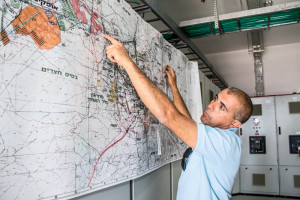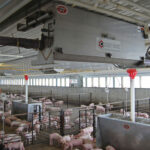Water for a Thirsty, And Hungry, World
“I remember myself as a boy of 15 or 16,” says Ami Brochin, a farmer in Israel’s northern Negev desert. “We could plant only wheat because that was the only thing you could grow here with the rainfall. “With what...
Water for a Thirsty, And Hungry, World
“I remember myself as a boy of 15 or 16,” says Ami Brochin, a farmer in Israel’s northern Negev desert. “We could plant only wheat because that was the only thing you could grow here with the rainfall. “With what...“I remember myself as a boy of 15 or 16,” says Ami Brochin, a farmer in Israel’s northern Negev desert. “We could plant only wheat because that was the only thing you could grow here with the rainfall.
“With what God gives you, is what you have,” he says through a translator. “We would pray for rain so we would have something to cut at the end of the season.”
Even in a good year, annual precipitation in the northern Negev averages from 100 to 200 millimeters (approximately 4 to 8 inches). Making matters more difficult, rain usually comes in winter only, and groundwater is often brackish and less than ideal for farming or most other uses.
Citizens of a certain age remember a feeling of hopelessness that would almost overwhelm them at times. Wars were fought over water, and the very survival of Israel and its neighbors was threatened by the lack thereof.
So, to make up for the climate’s shortcomings, the Israelis began an ambitious national effort to develop new ways of farming and managing water, including an enormous public works campaign. A new network of reservoirs was built, as were desalination and wastewater treatment plants, and the public was educated on how to use less of the precious resource.

Farmer and farmers union leader Ami Brochin shows a map of the Be’er Sheva-area wastewater treatment network. It was constructed with a combination of government and private funds, including Moshavei HaNegev, the regional water and agriculture association that manages some 34,600 acres of farmland.
After a few decades, recalls Brochin and others we interviewed, despair turned to hope and eventually a sense of accomplishment. “I remember … after years of struggle, suddenly we could grow other things,” says Brochin, who is also a leader in a local farmers union involved in building a new regional wastewater treatment system.
“Suddenly, the Negev—the desert—was green all year long.”
Israel’s water shortage had reached the level of existential crisis. The country is not only 60% desert, but also home to some of the driest places on earth, has a rapidly growing population and has suffered more frequent droughts in recent years.
Yet, through innovations, conservation and even more perseverance, the Israelis largely overcame their struggles with water shortages. It was for this reason that staff from FarmLife, the AGCO-brand magazine, decided to pay the country a visit, interviewing numerous farmers, water system officials, government leaders and others. We discovered a range of newly developed or improved technologies and practices, some complex, others remarkably simple.
They are solutions we detail and share in the new multi-story, online series, “Water for a Thirsty, and Hungry, World.” It is our hope that the best practices shared here can offer guidance, even inspiration, as we continue to work on ways to make the limited resource of water go further and feed a growing worldwide population.



